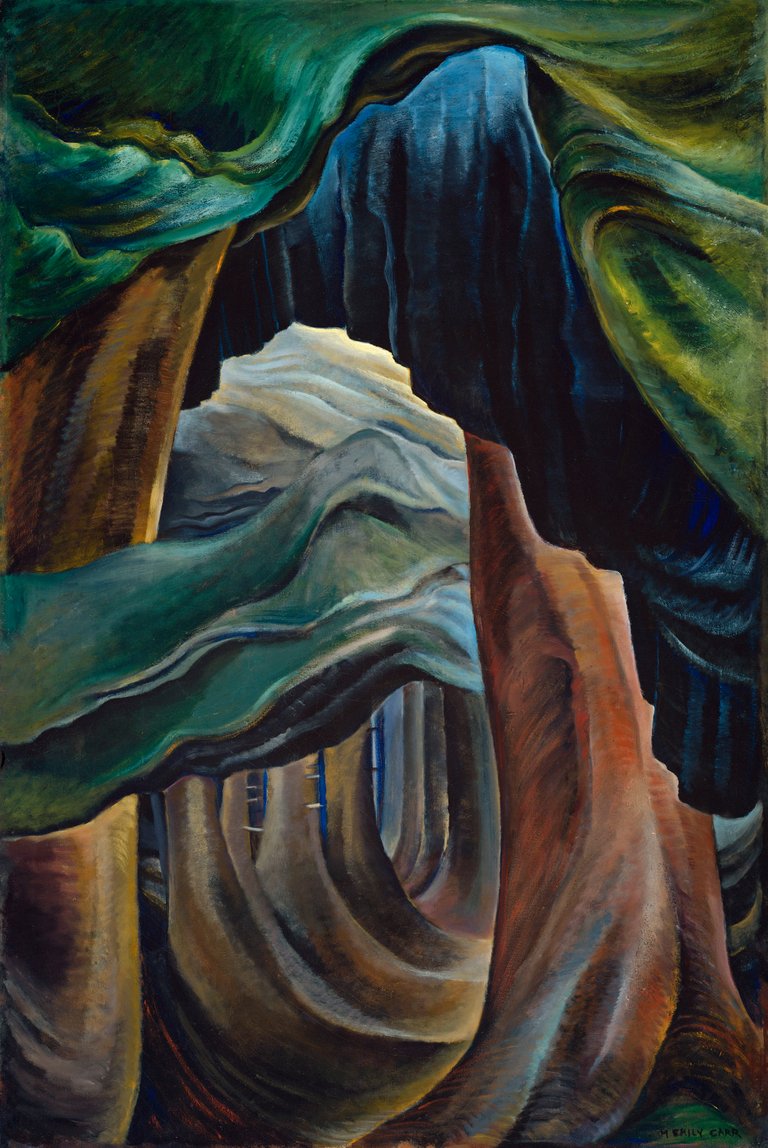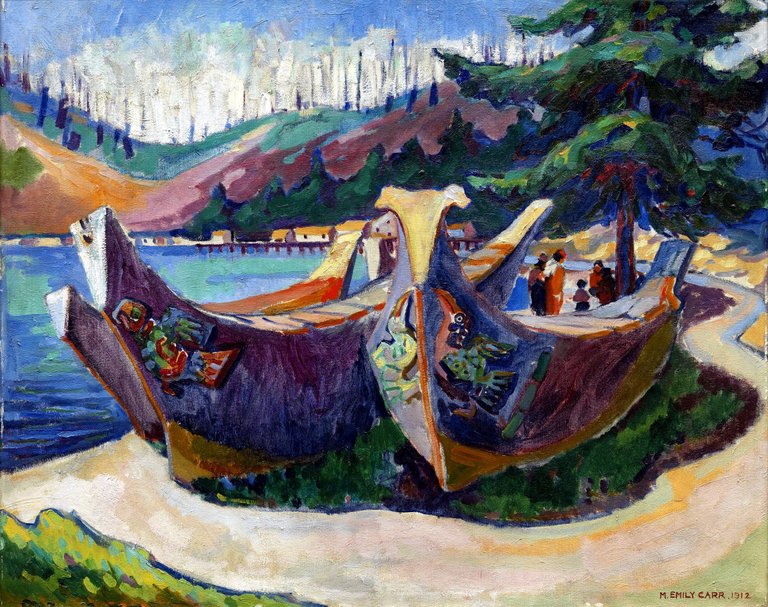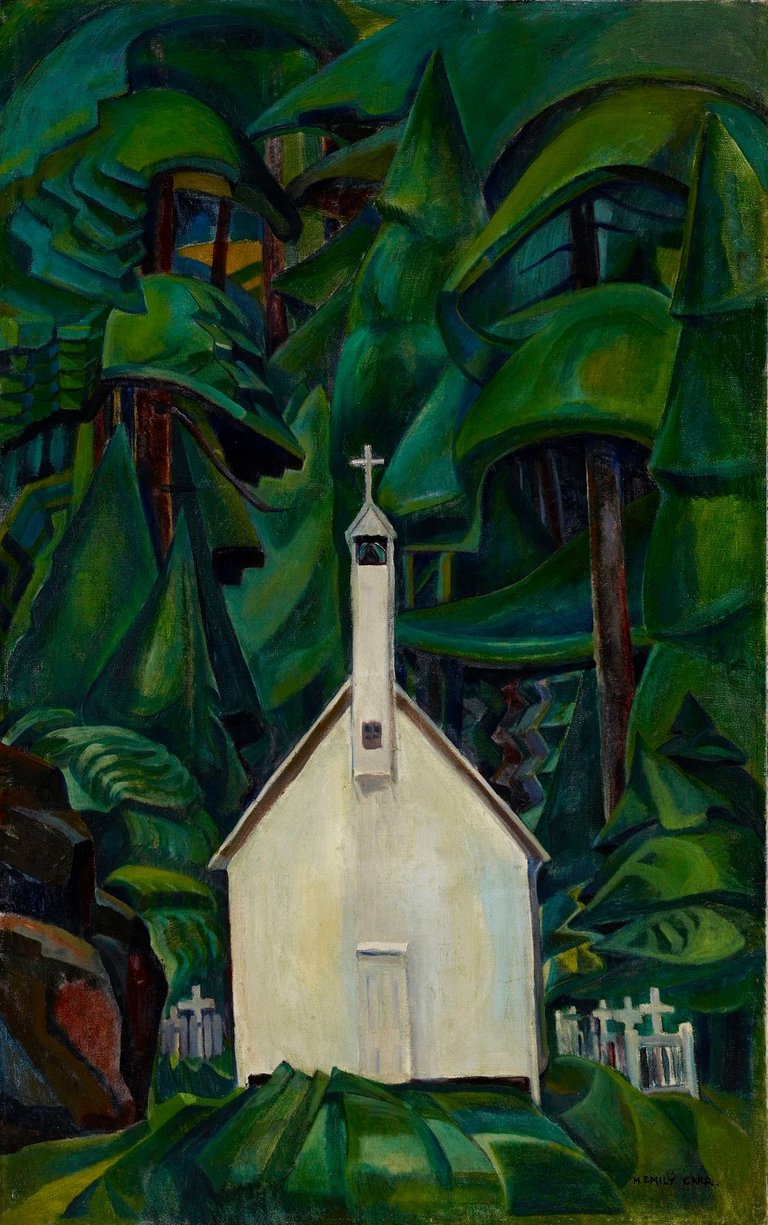
Forest, British Columbia
One of my favorite artists, Emily Carr, is one of Canada’s best known painters and authors. She was a rebel who was ahead of her time in her Victorian era. She was dedicated to her art, not domestic life, she was an eccentric, and a totally authentic human.
We are all artists who are a bit eccentric in some ways.
She camped in the woods with animals, including her pet monkey Woo.
She wrote about her adventures in her journals.
Her art was not appreciated in her day, and she outcast by society. She never gained approval when she was starting out as an artist, but now her work is enjoyed and studied by art students. A prestigious art university on Granville Island in Vancouver was named after her.
Her paintings are the greatest treasure in The Vancouver Art Gallery, and they are unmistakably hers. She was born in a storm in 1871 in Victoria, BC, and all her life she felt that struggle of a storm. She did not bend and conform, but lived life on her terms. She met a man who proposed marriage to her, but she knew she could not devote herself to her art as a married woman at that time, so she refused his proposal and never married.

First Nations War Canoes
A Kindred Spirit and Depicter of Native Art
She painted the Native totem poles along the BC Coast, but her art wasn’t accepted at the time. It was criticized for not depicting the colors accurately, but as she saw them, in their spirit form.S he studied art in San Francisco and returned to BC to do paintings showing the art and life of the Aboriginal peoples.
She went to London to study art and had a nervous breakdown, she missed her West Coast home so much. When she returned, she became a landlady in Victoria for fifteen years in Victoria and cleaned up after the borders in the rooming house to survive, and abandoned her art for years. Her ever present struggle for her art continued.
The turning point for her came when she was included in a Canadian exhibition in 1927 featuring modern and Native art, put on by Eric Brown from The National Gallery. He invited Carr and when he saw her art was totally blown away. She dominated the exhibition.
Carr Meets The Group Of Seven
While there she met The Group of Seven Canadian artists and their paintings spoke to her soul. Like Carr, The Group of Seven felt the landscape was an essential element of the spirit of Canada. They accepted her into their art community, because she had so much in common with them, and member Lawren Harris became her mentor.
Inspired by the Canadian artists known as The Group of Seven, Emily Carr began a second phase of Native paintings. She traveled to northern villages to sketch the totems. Within a year, by 1928, her art evolves dramatically into a semi-cubist style. She is still documenting Aboriginal art. She was “trying to make art out of art” like Harris said. He advised to her to go into nature to do her art, rather than depicting Native art.

The Indian Church
Emily Carr's Caravan In The Forest
She started making trips to the forest to observe, and bought a little box known as “The Caravan” which was like a motor home that sat on the hill and all her animals were out wandering around it. Each animal had its’ own little box to sleep in inside the caravan, including her pet monkey “Woo”.
While she was in the forest she painted beautiful free flowing oil on paper drawings of the trees. She developed a heart problem and became less able to go out in her caravan, and became more interested in writing. She had always written, but being prevented from going into the forest led to her writing more.
Carr As Writer
Her writing style was authentically her own. Writing for her was an art that was an equal expression for her as painting. Before painting the forest, she would write about it. Some of her “Klee Wyck” stories, (the name that the Native people had given her) were read over the National CBC radio during The Second World War, and her stories captured the imaginations and hearts of Canadians.
In Canada, Emily Carr first became known as a writer, when she won the The Governor General’s award for Klee Wyck, her first book in 1941. The title of the book came from a nickname that the Native peoples of Ucluelet gave her, which means "Laughing One".
It was not well known that she disagreed with sending First nations children to residential schools. She felt it made them ashamed of their heritage. Her book was heavily edited and censored at the time, as she was critical of missionary attitudes. The passages stating her feelings had the passages cut out that stated her views, but can be seen in the original manuscript.
After numerous heart attacks, she died in 1945.
Her Love Letter to Mother Nature:
“Dear Mother Earth. I think I have always specially belonged to you. I have loved from babyhood to roll upon you. To lie with my face pressed right down to you in my sorrows. I love the look of you and the smell of you and the feel of you. And when I die, I should like to be in you, uncoffined, unshrouded, the petals of flowers against my flesh and you, covering me up.”
Source:
Video - Youtube Paintings - Creative Commons
LOVE this post and topic (of course) Ann Hoy. You rock xoxo
Aaaw thanks!
Congratulations! Your post has been selected as a daily Steemit truffle! It is listed on rank 13 of all contributions awarded today. You can find the TOP DAILY TRUFFLE PICKS HERE.
I upvoted your contribution because to my mind your post is at least 22 SBD worth and should receive 67 votes. It's now up to the lovely Steemit community to make this come true.
I am
TrufflePig, an Artificial Intelligence Bot that helps minnows and content curators using Machine Learning. If you are curious how I select content, you can find an explanation here!Have a nice day and sincerely yours,

TrufflePigThanks!
Aaaw thanks!